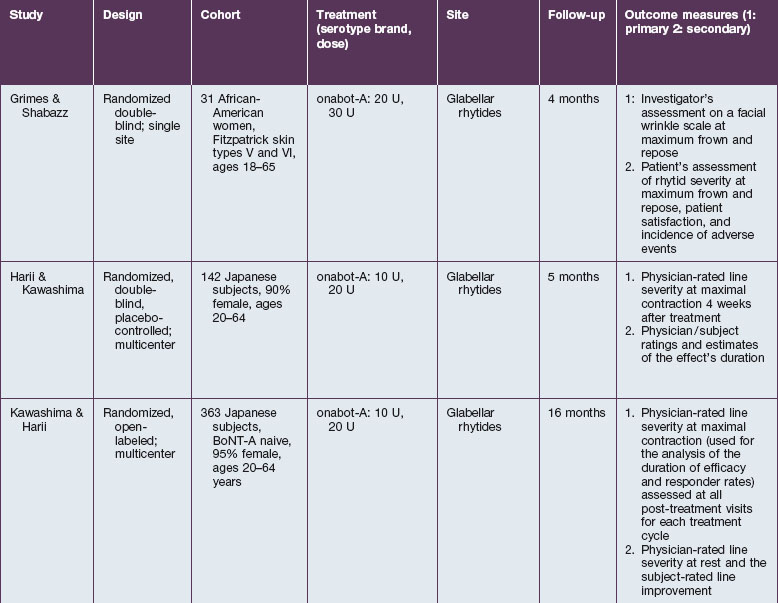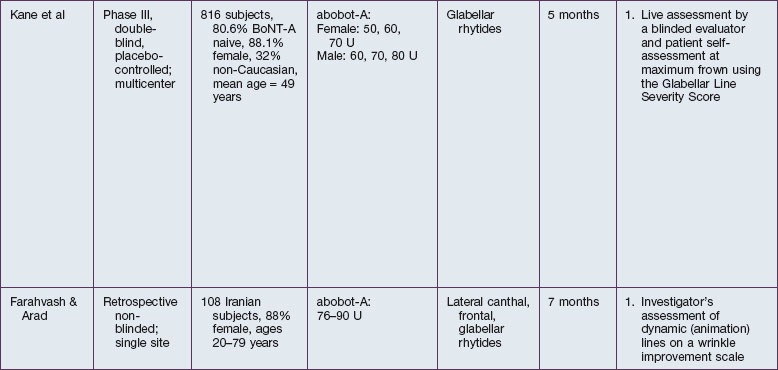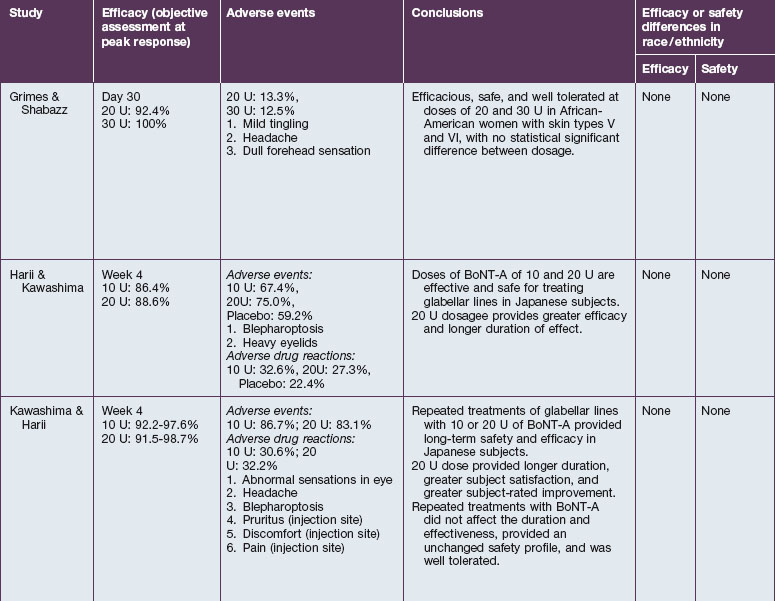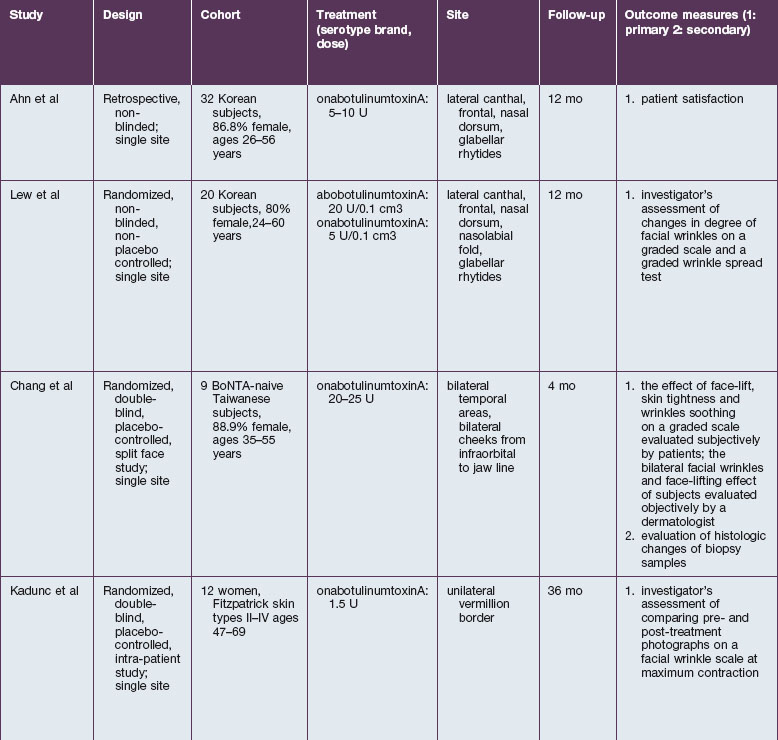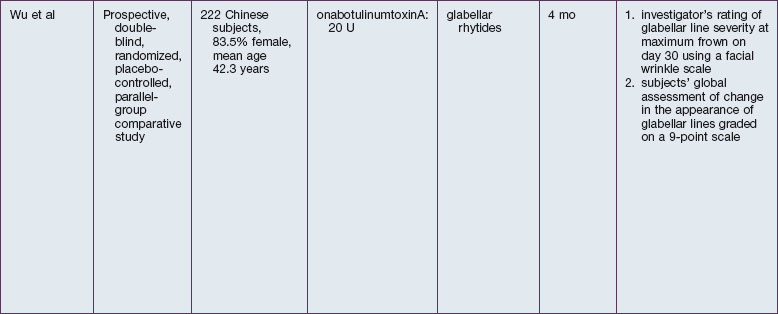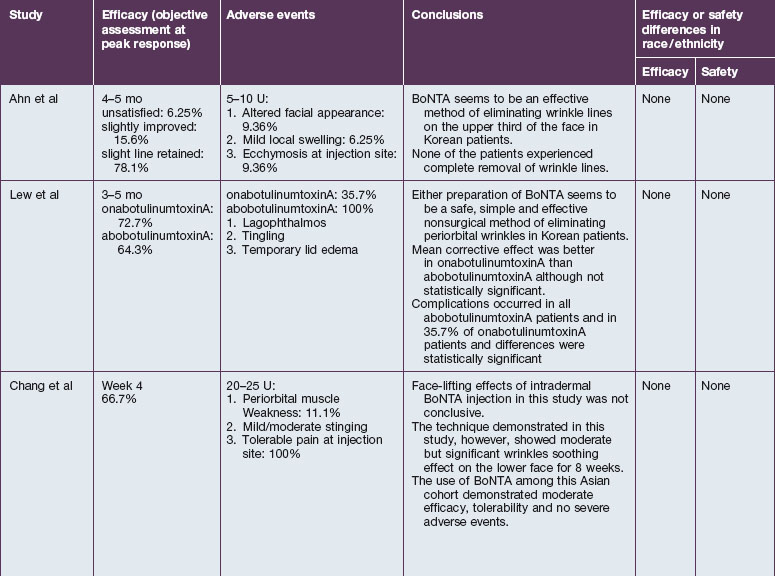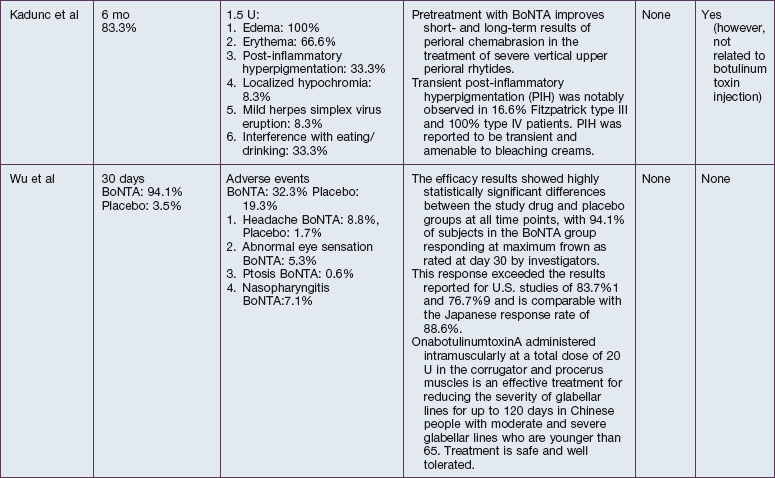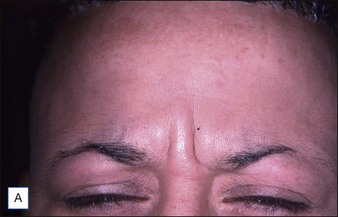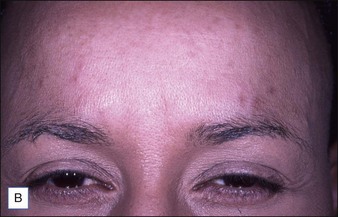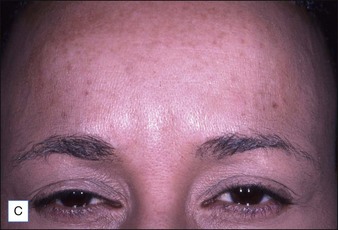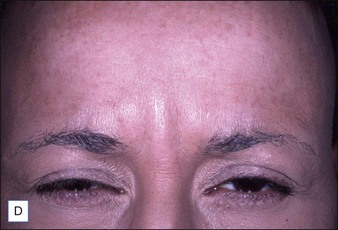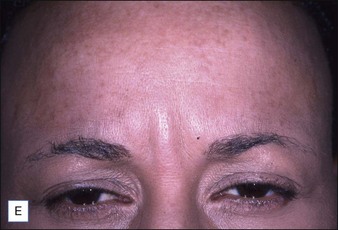21 Darker skin types
Summary and Key Features
• Botulinum toxin is a safe and effective procedure in darker skin types
• In general, efficacy and safety profiles are similar to lighter skin types
• With appropriate use, side effects are uncommon
• Injection techniques are similar to lighter skin types
• Commonly treated areas are glabellar and horizontal forehead lines
Safety and efficacy of botulinum toxins in darker skin types
The safety and efficacy of botulinum neurotoxin type A in the treatment of glabellar lines has been well studied in numerous populations (Table 21.1). Published data pertaining to the safety and efficacy of botulinum toxin in non-white patient populations are reviewed herein.
African-Americans
Grimes & Shabazz conducted a Phase IV study of onabot-A in the treatment of glabellar lines in 31 African-American women with Fitzpatrick skin types V and VI. The authors assessed the safety and efficacy at doses of 20 and 30 units (U) of onabot-A. No statistically significant differences in efficacy or safety were observed between the two doses (Figs 21.1, 21.2). A maximal response was observed on day 30, with 92.4% and 100% response rates (i.e. a score of ‘none’ or ‘mild’ on the facial wrinkle scale) in the 20 U and 30 U groups respectively. Adverse events were mild and transient and did not differ between the dosing groups. They included mild tingling, slight headaches, and dullness of the forehead.
Stay updated, free articles. Join our Telegram channel

Full access? Get Clinical Tree


